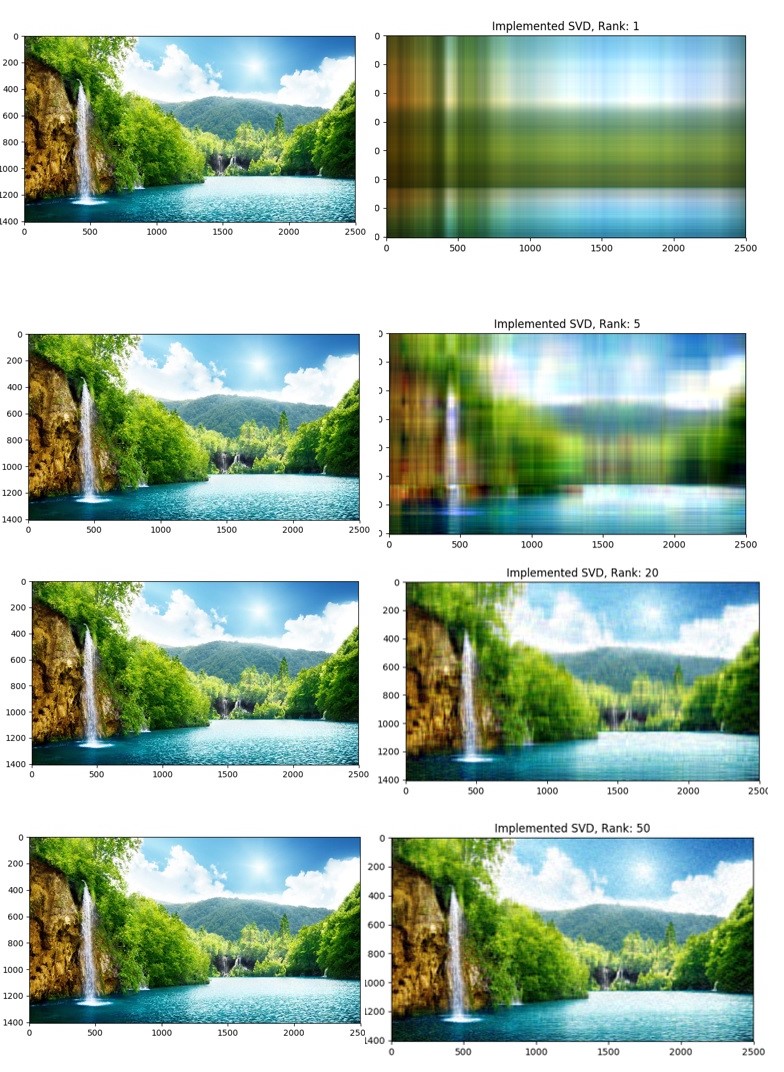SVD is a method that decomposes and rectangular matrix, e. g. an image, to three matrices as follows:
A = U*S*Transpose(V), where U and V are orthogonal(U*Transpose(U)=V*Transpose(V)=I) and S is a diagonal matrix that has root of the eigenvalues.
- Read the image,then normalize and split it to three channels: Red, Green and Blue.
- Use SVD built-in function to see the expected U, S, V matrices.
- Calculate SVD by your own. In this step, I have used this approach:
- Send the transpose of matrices because of their sizes, since in A is mxn matrix, m should be smaller or equal than n. The equation of A = U*S*Transpose(V) becomes A*Transpose(A) = V*S*Transpose(V) Transpose(A)*A = V*S*Transpose(U) U*S*Transpose(V)=V*S^2*Transpose(V) A*Transpose(A) = U*S*Transpose(V) V*S*Transpose(U)=U*S^2*Transpose(U)
- Calculate eigenvectors and eigenvalues of these two matrices. Sort the eigenvectors corresponding to their eigenvalues by descending order.
- Take the root of the first computed positive eigenvalues and put it to S. If this eigenvalues are not enough, add from the second computed positive eigenvalues.
- Check the sign of eigenvectors that calculated. It makes image noisy if an eigenvector has inverted sign than SVD built-in function’s eigenvector. Therefore, we need to compare each computed U and V with SVD built-in function’s U and V.
- Plot the result
The results are as follows:
